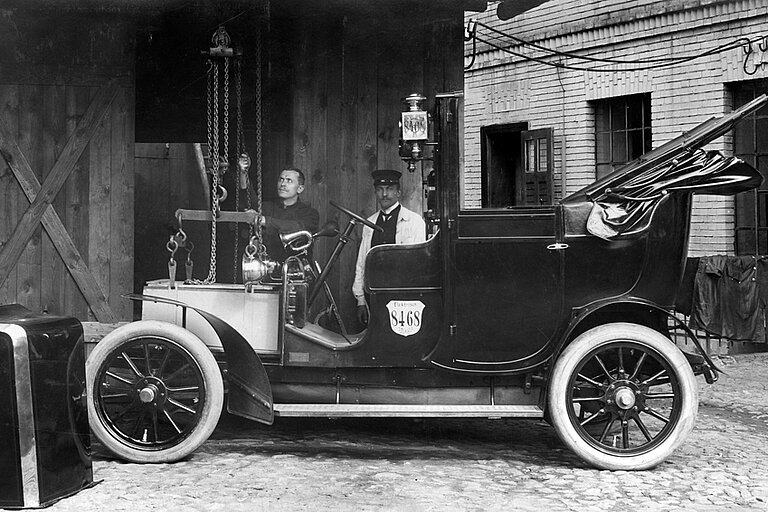Publications
![[Translate to Englisch:] [Translate to Englisch:]](/fileadmin/user_upload/Presse_und_Medien/mediathek/YouTube-Vorschaubild/NOA-Namur-Open-Architecture-Connectivity.jpg)
In 1866, Werner Siemens laid the foundation for the electric drive with the discovery of the electrodynamic principle. On January 29th in 1886 Karl Benz patented his motor vehicle. At that time, nobody imagined that this technology would dominate transport to the present day.

It was Werner Siemens who in 1866 laid the foundation for the electric drive with the discovery of the electrodynamic principle. Electric power was now available everywhere at high current, the first electric cars were developed, and the image of electric motors and electric vehicles was thoroughly positive. They were not only easier to operate, but had also no gears and did not need to be pre-heated.
Until the beginning of the 20th century, it was not yet certain which type of drive would prevail for cars. The steam engine led the field for a long time. But at the beginning of the 20th century, the producers of virtually all industrialised countries brought electric vehicles onto the market – in Germany alone, there were over 25, including cars by Siemens and Henschel. Even Ferdinand Porsche unveiled an electric vehicle at the World Fair.
In 1912, 20 renowned manufacturers, such as the Anderson Electric Car Company and Columbia Automobile Company, produced nearly 34,000 electric cars in the USA. Detroit Electric, a vehicle marque of the Anderson Company which was produced from 1907 to 1938, was expensive but extremely popular.
The electric car held the upper hand until around 1912. The decline began around 1910, when the starting of petrol-driven vehicles units became much more convenient due to the use of starters instead of cranking. Cheap oil and the longer range of the gasoline engine did the rest. Although engineers believed even then that a powerful battery would soon be invented, the capacity has been insufficient for long ranges until today. Even fuel cells are only now coming to meet the hopes placed in them.
Since then, electric vehicles continued to survive only in niches – in factory buildings, storage facilities or as small delivery vans. In Berlin in 1953, the postal service emptied the mailboxes of the city using electric vehicles.
As a result of the oil crisis in the 1970’s and the Gulf War in the 1990’s, there have been repeated attempts to develop electric cars further. Only today is success in sight. The main reason is climate protection, with the clear goal of emission-free mobility. Hundreds of millions of Euros are being pumped into the development all over the world. The protagonists speak of a key technology of the 21st century and envision the growth of a market in the billions. Whoever comes first with sustainable concepts and technologies could become the lead supplier provider, create added value, and thus secure jobs.
Components that go into the electric car of the future are already produced in Germany: energy storage batteries and fuel cells, electric motor propulsion systems, control hardware for power electronics, switching systems and automation software for the electric charging station. The German industry is a world leader in the field. But the Asians are catching up.
The future electric car will use lithium-ion batteries for energy storage. The manufacture of battery modules has already been mastered by the German supply industry. The production of the cell, however, has proven unfeasible so far, but there are promising approaches.
Electro-mobility will establish itself in Germany. The question is, how long will it take? German industry is capable of becoming the market leader in a technology that will permanently alter the mobility of the coming decades. This cannot be done without the aid of politics, which has set course in the right direction with the National Platform for Electro-mobility (NPE). The ZVEI - German Electrical and Electronic Manufacturers' Association is the driver of this process and ensures that the convoy can pick up speed. If all participating industries pull together, changes could occur so quickly that competitors from other continents would find it difficult to keep pace. There will be no more stopping or turning back.